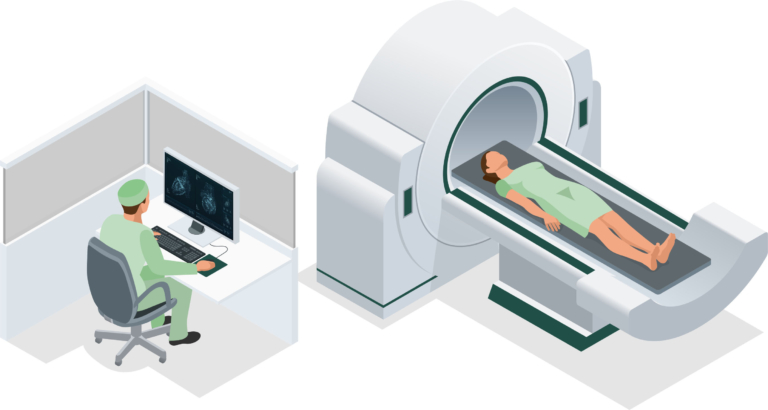Cardiac MRI is one of the most important tools available to evaluate the heart.
But until recently, the availability of expertise to run the exam, process the images, and interpret the studies has been a limiting factor in expanding cardiac MRI offerings.
Today, however, more accelerated imaging techniques and wider access to specialized personnel are making it possible for cardiac MRI to not only be offered in large hospitals, but also outpatient centers. We spoke with Dr. Giovanni Lorenz, a Cleveland Clinic fellowship-trained Cardiac and Thoracic radiologist and pioneer in reshaping the standard protocol workflow, to learn how imaging centers can cut exam times to 30 minutes while also improving accuracy, efficiency, and efficacy.
Impact of reduced exam times on workflow efficiency + efficacy:
[Dr. Lorenz]
It’s no secret that magnet time is a precious resource. When we look at efficiency gains in cardiac imaging, we start with considering the “stranded island effect”; if I only had one sequence to answer this question, which one would it be (the functional exam, the stress, valve work, or enhancement, etc)? Once you’ve built your protocol around this concept, then it’s okay to build in some of the “nice to have” sequences afterward.
At my institution, we push our technologists to spend the time upfront coaching the patient on breathing techniques, improving comfort, and reducing extra sequences. Our cardiac imagers then provide a trim/efficient protocol – with no fluff. This might include doing the most import sequence first (ie. delayed enhancement) and filling in supporting sequences later.
This novel way of workflow improvement allows us to get the most out of the patient and the technologist without fatigue setting in, ruining the exam. The conventional way is to start with localizers and build from there, ending with the most important sequences. By this time, everyone is tired, sequences begin to degrade, and no one is happy. With a little review, our protocols are now lean, and less than 30 minutes on most occasions.
Through DocPanel, imaging centers can access Dr. Lorenz’s expertise on a case-by-case basis. To learn more, send us a note here.
Improved accuracy with shorter exam times:
[Dr. Lorenz]
All of us have our own set point of fatigue. Accurate acquisition begins with setting the right expectation with the patient. So we show them right away what the magnet and table look like. We also fit them with a hula hoop to ensure they’re comfortable with the size of the magnet bore. Then we practice breathing and commands. Once they have a feel of what’s going to happen, we apply that energy to the most important sequences first.
Our technologists also have levels of accuracy and so the protocol needs to be short and to the point. Accelerators like SENSE and cube are useful in other areas of MRI but haven’t found a place in cardiac MRI, so we compensate with fewer sequences. Lastly, the interpreting radiologist needs to have just enough information from the referring clinician to answer the question. This refines and limits my search pattern so I can provide a more in-depth read.
Next up, read: How Any Imaging Center Can Offer Cardiac MRI
Patient safety and comfort:
[Dr. Lorenz]
The patient is probably the most important part of the exam. I’m not sure if you’ve laid on an MRI table, but it’s hard, rigid, and not a fun place to be for 45min -1.5hrs. This is what we are asking our patients to do daily. I think the single most important thing we can do – is make the exam more comfortable.
So we employ better blankets, softer pillows, better earplugs, and limit the exam to a modest 30 minutes. We find this to be the optimum time frame for most of our patients, the staff, and the radiologist. I think this is why we’ve been so successful.
If you would like to learn more about how you can access Dr. Lorenz’s expertise on a case-by-case basis through DocPanel, send us a note here.
The DoD, Air Force, and DHA do not endorse any activities or claims in this post.
